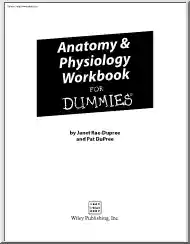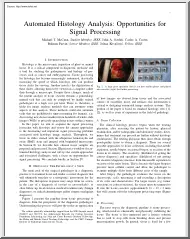Értékelések
Nincs még értékelés. Legyél Te az első!
Mit olvastak a többiek, ha ezzel végeztek?
Tartalmi kivonat
Source: http://www.doksinet Version: 3 Published: March 2001 Updated: April 2008 Date of review: November 2011 Authors: Dr. PJ Halsall and Prof FR Ellis Updated: November 2011 Updated by: Muscular Dystrophy Campaign Date of review: November 2012 Anaesthetics People with muscular dystrophy or a related condition must take great care if they are to have a local or general anaesthetic. Even someone who has a very mild form of a neuromuscular condition or a family history of a condition, needs to let the anaesthetist know well in advance so that tests can be carried out and proper care after the operation can be arranged. Who should read this? Everyone who has muscular dystrophy or a related condition, even if their symptoms are very mild. Everyone who has, or had a relative, with one of these conditions. Health professionals involved with the care of people with a neuromuscular condition at the time of an operation or treatment requiring an anaesthetic. Anaesthetics
and muscular dystrophy and related conditions The low rate of complications and number of deaths arising from anaesthesia show that it is a very safe procedure. This is the result of a thorough understanding of the patient’s medical condition, with a careful assessment before the operation, marked technical improvements in monitoring facilities during the operation, and the provision of good recovery facilities such as High Dependency Units and Intensive Care Units. Many of the agents used in anaesthetics- such as gases and chemicals- affect both muscle and nervous tissue. For patients with muscular dystrophy or a related condition, these agents can have a greater affect. The main areas of concern are how the anaesthetic agents will affect the muscle and how they will affect the heart that is itself a muscle. A skeletal deformity such as scoliosis (curvature of the spine) can also affect the way a patient responds to anaesthesia. Source: http://www.doksinet Anaesthetics and the
heart Those with muscular dystrophy or a related condition can sometimes have associated heart disease. This can occur as a cardiomyopathy, when the heart muscle doesn’t work effectively, or as a defect in the way the electrical activity of the heart is transmitted- a conduction defect. The anaesthetic vapours – such as ether and halothane which are inhaled – can reduce the effectiveness of the heart’s muscle contractions and also aggravate any conduction defect. The vapours are different from each other, some having more effect on the heart than others. The anaesthetist will make an assessment of the heart’s condition before the operation which would include the level of physical activity that the patient can manage, and an Electrocardiogram. Occasionally a more extensive assessment is needed Anaesthetics and breathing Doctors need to measure how weak the patient’s muscles are. To do this they will assess the amount of physical activity that the patient can perform, and
take a blood sample to measure levels of a muscle enzyme called creatine kinase. Any anaesthetic agent that affects the muscles will also affect the muscles that are used to breathe. Strong analgesic or sedative agents will affect these muscles indirectly, and muscle relaxants will have a direct effect on them. As breathing may already be difficult for patients with neuromuscular conditions, these drugs should be used cautiously, and monitoring of breathing after the operation is absolutely essential. As a result, the patient is usually best cared for in a High Dependency Unit or Intensive Care Unit immediately after the operation. The muscles used for swallowing can also be affected, which is another reason why good post-operative care is important. Muscle relaxants Muscle relaxant drugs should only be used if essential because they can have a more profound and prolonged effect in patients with these conditions compared to other patients. One type of muscle relaxant in particular,
called suxamethonium, should be avoided. It causes the release of potassium ions from the muscle tissue into the blood. In healthy patients this is usually of little practical significance. In patients with these conditions the muscle may normally leak potassium ions so that a further increase in the levels of potassium ions in the blood may cause abnormal heart rhythms. A pre-operative blood test to check potassium levels is therefore important. Local anaesthetics A local anaesthetic works by preventing the normal electrical activity in the nerve around which the anaesthetic agents are placed. Local anaesthetics are used for minor proceduressuch as stitches for cuts, because they have few side effects For major local anaesthetic techniques, such as spinal or epidural, careful assessment of the patient and their condition is required before the operation. Changes in body temperature and preoperative ‘starvation’ Patients with neuromuscular conditions do not tolerate changes in
body temperature or the starvation often associated with anaesthesia or surgery as well as healthy patients. These issues can be minimised by keeping the patient warm and well-hydrated, using drips. Source: http://www.doksinet Malignant hyperthermia and these conditions Malignant hyperthermia is an inherited disorder that causes an unexpected, sometimes fatal, reaction in the patient to certain anaesthetic drugs. It is generally accepted that the only neuromuscular condition truly related to malignant hyperthermia is Central Core Disease, although this is not always the case. Patients with Central Core Disease can be susceptible to malignant hyperthermia. They can undergo a muscle biopsy which screens for malignant hyperthermia. Important precautions Anaesthesia for people with muscular dystrophy or a related condition is not to be undertaken lightly. Patients should expect the anaesthetist to make a careful and thorough assessment of their particular condition and their
current state of health. Doctors should carry out pre-operative investigations. Enough time and appropriate recovery facilities should be available after the operation. In most cases, patients with these conditions will not be treated as ‘day cases’. Patients with these conditions must inform the anaesthetist even if they have only minor symptoms or no symptoms at all. Occasionally a neuromuscular disorder in a person who had no symptoms has come to light only because of an unexpected problem with anaesthesia. This can be the case particularly with young children The anaesthetist should also be warned if there is an inherited neuromuscular condition in the family, even if the individual has no symptoms. Ask for the anaesthetist to be forewarned before admission to hospital and consider wearing a Medic Alert bracelet or similar. In the case of unplanned admissions it may be worth accessing the “About me and my MD” card available from the Muscular Dystrophy
Campaign. This is an information card for people with muscular dystrophy or a related condition to assist health professionals to better understand their condition and their individual needs. Provide copies of a fact sheet covering your condition for members of staff including the anaesthetist. References rd 1. Emery A, Muscular dystrophy: the facts, 3 edition, 2008, Oxford University Press, New York 2. Chalkiadis G, Branch K, Cardiac arrest after isoflurane anaesthesia in a patient with Duchenne’s muscular dystrophy, Anaesthesia 1990, Volume 45, 22-25 3. Klingler W, Lehmann-Horn F, Jurkat-Rott K, Complications of anaesthesia in neuromuscular disorders, Neuromuscular Disorders 2005, Volume 15, 195-206 4. Vercauteren M, Heytens L, Anaesthetic considerations for patients with a pre-existing neurological deficit: are neuraxial techniques safe? Acta Anaesthesiol Scand 2007, Volume 51, 831-838 Disclaimer While every reasonable effort is made to ensure that the information in this
document is complete, correct and up-to-date, this cannot be guaranteed and the Muscular Dystrophy Campaign shall not be liable whatsoever for any damages incurred as a result of its use. The Source: http://www.doksinet Muscular Dystrophy Campaign does not necessarily endorse the services provided by the organisations listed in our fact sheets
and muscular dystrophy and related conditions The low rate of complications and number of deaths arising from anaesthesia show that it is a very safe procedure. This is the result of a thorough understanding of the patient’s medical condition, with a careful assessment before the operation, marked technical improvements in monitoring facilities during the operation, and the provision of good recovery facilities such as High Dependency Units and Intensive Care Units. Many of the agents used in anaesthetics- such as gases and chemicals- affect both muscle and nervous tissue. For patients with muscular dystrophy or a related condition, these agents can have a greater affect. The main areas of concern are how the anaesthetic agents will affect the muscle and how they will affect the heart that is itself a muscle. A skeletal deformity such as scoliosis (curvature of the spine) can also affect the way a patient responds to anaesthesia. Source: http://www.doksinet Anaesthetics and the
heart Those with muscular dystrophy or a related condition can sometimes have associated heart disease. This can occur as a cardiomyopathy, when the heart muscle doesn’t work effectively, or as a defect in the way the electrical activity of the heart is transmitted- a conduction defect. The anaesthetic vapours – such as ether and halothane which are inhaled – can reduce the effectiveness of the heart’s muscle contractions and also aggravate any conduction defect. The vapours are different from each other, some having more effect on the heart than others. The anaesthetist will make an assessment of the heart’s condition before the operation which would include the level of physical activity that the patient can manage, and an Electrocardiogram. Occasionally a more extensive assessment is needed Anaesthetics and breathing Doctors need to measure how weak the patient’s muscles are. To do this they will assess the amount of physical activity that the patient can perform, and
take a blood sample to measure levels of a muscle enzyme called creatine kinase. Any anaesthetic agent that affects the muscles will also affect the muscles that are used to breathe. Strong analgesic or sedative agents will affect these muscles indirectly, and muscle relaxants will have a direct effect on them. As breathing may already be difficult for patients with neuromuscular conditions, these drugs should be used cautiously, and monitoring of breathing after the operation is absolutely essential. As a result, the patient is usually best cared for in a High Dependency Unit or Intensive Care Unit immediately after the operation. The muscles used for swallowing can also be affected, which is another reason why good post-operative care is important. Muscle relaxants Muscle relaxant drugs should only be used if essential because they can have a more profound and prolonged effect in patients with these conditions compared to other patients. One type of muscle relaxant in particular,
called suxamethonium, should be avoided. It causes the release of potassium ions from the muscle tissue into the blood. In healthy patients this is usually of little practical significance. In patients with these conditions the muscle may normally leak potassium ions so that a further increase in the levels of potassium ions in the blood may cause abnormal heart rhythms. A pre-operative blood test to check potassium levels is therefore important. Local anaesthetics A local anaesthetic works by preventing the normal electrical activity in the nerve around which the anaesthetic agents are placed. Local anaesthetics are used for minor proceduressuch as stitches for cuts, because they have few side effects For major local anaesthetic techniques, such as spinal or epidural, careful assessment of the patient and their condition is required before the operation. Changes in body temperature and preoperative ‘starvation’ Patients with neuromuscular conditions do not tolerate changes in
body temperature or the starvation often associated with anaesthesia or surgery as well as healthy patients. These issues can be minimised by keeping the patient warm and well-hydrated, using drips. Source: http://www.doksinet Malignant hyperthermia and these conditions Malignant hyperthermia is an inherited disorder that causes an unexpected, sometimes fatal, reaction in the patient to certain anaesthetic drugs. It is generally accepted that the only neuromuscular condition truly related to malignant hyperthermia is Central Core Disease, although this is not always the case. Patients with Central Core Disease can be susceptible to malignant hyperthermia. They can undergo a muscle biopsy which screens for malignant hyperthermia. Important precautions Anaesthesia for people with muscular dystrophy or a related condition is not to be undertaken lightly. Patients should expect the anaesthetist to make a careful and thorough assessment of their particular condition and their
current state of health. Doctors should carry out pre-operative investigations. Enough time and appropriate recovery facilities should be available after the operation. In most cases, patients with these conditions will not be treated as ‘day cases’. Patients with these conditions must inform the anaesthetist even if they have only minor symptoms or no symptoms at all. Occasionally a neuromuscular disorder in a person who had no symptoms has come to light only because of an unexpected problem with anaesthesia. This can be the case particularly with young children The anaesthetist should also be warned if there is an inherited neuromuscular condition in the family, even if the individual has no symptoms. Ask for the anaesthetist to be forewarned before admission to hospital and consider wearing a Medic Alert bracelet or similar. In the case of unplanned admissions it may be worth accessing the “About me and my MD” card available from the Muscular Dystrophy
Campaign. This is an information card for people with muscular dystrophy or a related condition to assist health professionals to better understand their condition and their individual needs. Provide copies of a fact sheet covering your condition for members of staff including the anaesthetist. References rd 1. Emery A, Muscular dystrophy: the facts, 3 edition, 2008, Oxford University Press, New York 2. Chalkiadis G, Branch K, Cardiac arrest after isoflurane anaesthesia in a patient with Duchenne’s muscular dystrophy, Anaesthesia 1990, Volume 45, 22-25 3. Klingler W, Lehmann-Horn F, Jurkat-Rott K, Complications of anaesthesia in neuromuscular disorders, Neuromuscular Disorders 2005, Volume 15, 195-206 4. Vercauteren M, Heytens L, Anaesthetic considerations for patients with a pre-existing neurological deficit: are neuraxial techniques safe? Acta Anaesthesiol Scand 2007, Volume 51, 831-838 Disclaimer While every reasonable effort is made to ensure that the information in this
document is complete, correct and up-to-date, this cannot be guaranteed and the Muscular Dystrophy Campaign shall not be liable whatsoever for any damages incurred as a result of its use. The Source: http://www.doksinet Muscular Dystrophy Campaign does not necessarily endorse the services provided by the organisations listed in our fact sheets





